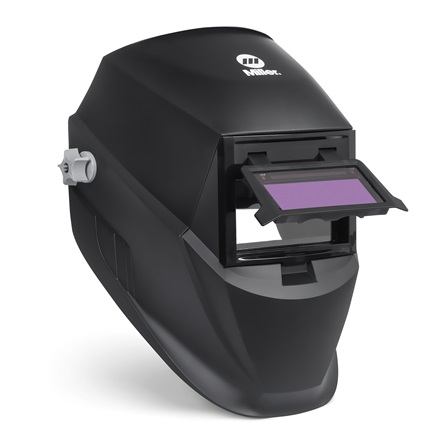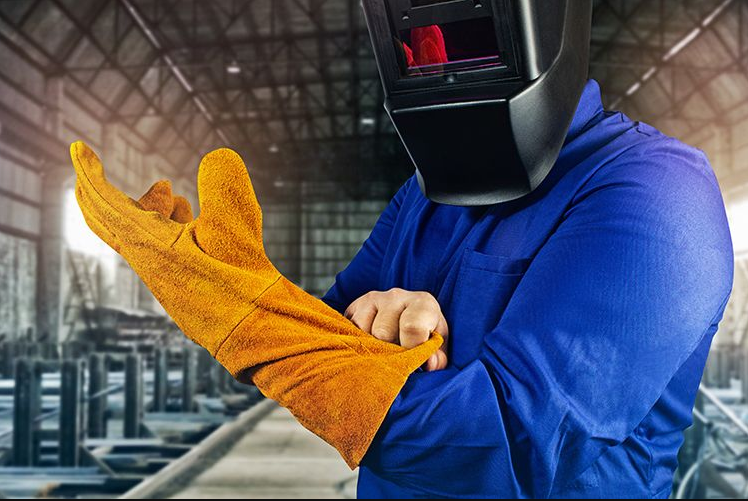Essential Welding Safety Gear: A Beginner’s Guide
Introduction
Welding demands not only technical expertise but an unwavering commitment to safety. For beginners venturing into the world of welding, understanding and investing in the right safety gear is paramount.
In this guide, we delve into the often-overlooked aspects of essential welding safety gear, providing insights that go beyond the conventional discourse in the industry.
The Unseen Hazards: UV Radiation
Welders navigate a landscape fraught with hazards, with one of the most insidious being UV radiation. While the dazzling arcs of welding can be mesmerizing, they conceal a silent threat – one that can lead to long-term health issues. UV radiation is a well-known culprit for causing skin cancer, making protective measures a non-negotiable aspect of the welding experience.


Miller Classic Series, FS #10, 2×4 Flip-up with ClearLight™
Welding Helmets: More Than a Shield
A welding helmet is not merely a shield against sparks and bright lights; it’s a front line defense against the harmful effects of UV radiation. Beyond the conventional lens, modern welding helmets incorporate advanced technologies like auto-darkening filters. These not only provide clear visibility during welding but also automatically adjust to varying light conditions, offering a seamless and protective user experience.
The Silent Menace: Noise Pollution
In the symphony of metalworking, noise often takes center stage. The clattering of tools, the hiss of welding arcs, and the rumble of machinery create an auditory landscape that can be detrimental to a welder’s hearing health. While the importance of ear protection might seem evident, it is frequently overshadowed by discussions on more visible safety gear.
Hearing Protection: Guarding Against Decibels
The relentless assault of noise during welding can lead to irreversible hearing damage. Yet, hearing protection tends to be an underrated aspect of safety discussions. Investing in quality earplugs or earmuffs is not just a comfort choice; it’s a safeguard against the silent menace of noise pollution. Selecting hearing protection designed for prolonged use ensures that welders can focus on their craft without compromising their auditory well-being.
The Heat Challenge
The intense heat generated during welding poses another layer of risk, particularly to the lower extremities. While welding jackets and gloves are standard fare, flame retardant pants are often relegated to the background of safety considerations.
Flame Retardant Pants: Lower Body Defense
Welding exposes the lower body to splatter and sparks, making flame retardant pants a crucial component of a welder’s ensemble. Designed to resist ignition and prevent the spread of flames, these pants offer comprehensive protection. Incorporating flame retardant materials into the wardrobe ensures that welders are shielded not only from burns but also from the long-term consequences of exposure to heat.

A Range of Protection: Safety Gear Integration
Safety in welding is not a one-size-fits-all proposition. It is a challenge that requires the integration of various safety gear elements. From welding helmets providing UV protection to flame retardant pants guarding against heat, the combination of this equipment forms an impenetrable shield.
“Welders are constantly exposed to many hazards while they are working. The most common hazard is UV radiation, which can cause skin cancer. Other hazards include noise, sparks, and heat. It is important for welders to wear PPE (Personal Protective Equipment) to prevent injuries while welding.”
Read more about welding Personal Protective Equipment Here.
Protective Gloves: A Multifaceted Barrier
In the field of welding, hands are the unsung heroes. Yet, the hands are also the most vulnerable to burns, cuts, and abrasions. The importance of protective gloves cannot be overstated, but the nuances of choosing the right pair are often lost in the clamor of other safety discussions.
Selecting the appropriate gloves involves considering the type of welding, material thickness, and the potential for splatter. Leather gloves, for instance, offer excellent heat resistance and durability, making them suitable for heavy-duty welding. Conversely, MIG welding might necessitate gloves with dexterity for intricate movements. Understanding the multifaceted nature of protective gloves is pivotal in ensuring hands remain unscathed amidst the intense environment of welding.
Foot Protection: Beyond Steel Toe Boots
Foot injuries in welding, though less discussed, can be debilitating. From falling objects to molten metal, the welding floor poses unique risks to the feet. As with gloves, foot protection is not a one-style-fits-all affair. While steel toe boots are the poster child of foot protection, welders should delve deeper into footwear. The welding environment demands not only impact resistance but also heat resistance. Boots with metatarsal guards provide an additional layer of protection against falling objects and sparks, ensuring that foot safety receives the attention it deserves.
A Comprehensive Approach
From the shielded gaze offered by welding helmets to the steadfast protection of flame retardant pants, each element contributes to your well being. The welding landscape may be dazzling, but its hazards are real. By investing in and understanding the often-overlooked aspects of safety gear, you fortify yourself against serious injury.
